Sad chord progressions are some of the most impactful and intriguing elements in music (and music production).
They can bring out deep emotions and make people really connect with the music on a profound level.
That’s why, as a producer, knowing the most emotionally-powered sad chord progressions is super beneficial.
With them, you can create epic compositions and convey complex feelings like a professional.
In today’s sad chord progressions article, we’ll break down:
- The music theory behind sad chord progressions ✓
- Minor chords and their emotional impact ✓
- Using dissonance and tension effectively ✓
- Incorporating modal interchange ✓
- Eight popular sad chord progressions ✓
- How to create your own sad chord progressions ✓
- Choosing the right key ✓
- Building effective chord sequences ✓
- Adding suspended and diminished chords ✓
- Balancing consonance and dissonance ✓
- Enhancing sadness with melodic elements ✓
- Production tips for sad chord progressions ✓
- How to create a great progression every time ✓
- Much more ✓
By the end of this article, you’ll know exactly how to create and enhance sad chord progressions, so your songs are more compelling and powerful.
Plus, your sad chord progressions will always be deeply moving and super effective from this moment forward.
Your listeners are sure to feel connected and moved, whether it’s your first progression or hundredth.
So, let’s dive in…
Table of Contents
The Power Behind Sad Chord Progressions
Sad chord progressions can convey deep emotions and reflections. They create a sense of longing and introspection, which people really vibe with and remember (if done correctly). Let’s kick things off with a little music theory.
-
Minor Chords: The Foundation of Sadness
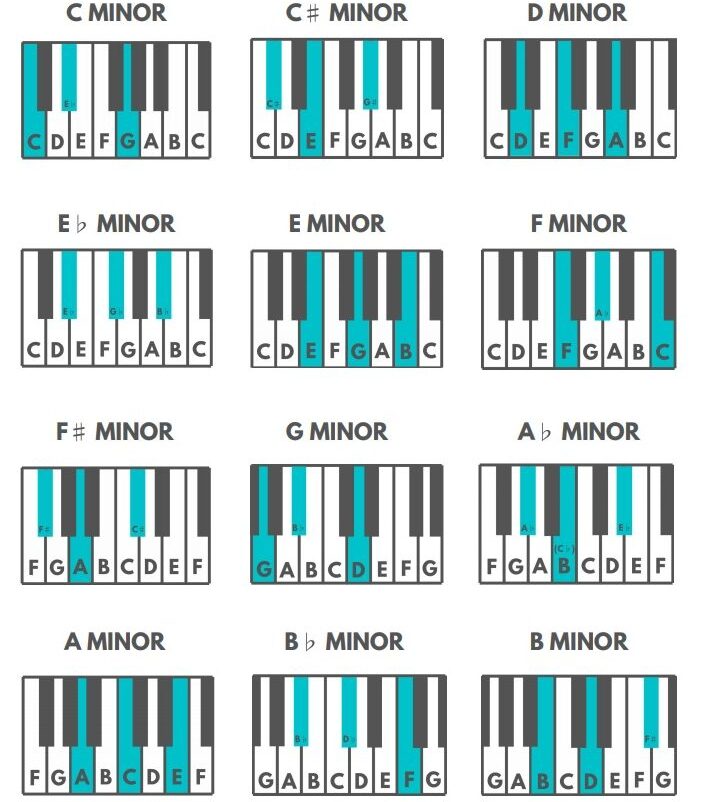
Minor chords are the heart and soul of sad/emotional chord progressions, always have been, always will be.
They are composed of a:
- Root note
- Minor third
- Perfect fifth
Together, they create a sound that is, in essence, sadder and (even though I hate using this word as every other writer does when concerning this topic) melancholic.
For example, in an A minor chord (A-C-E), the interval from A to C is a minor third 一 producing that unmistakable sorrowful tone.
This minor third interval is what you need to really understand because it gives the chord its almost grief-like quality.
Using chords like D minor (D-F-A) or E minor (E-G-B) can instantly set a somber mood in your music.
From classical pieces to modern pop songs and everything in between, minor chords are super versatile and powerful.
By starting with a minor chord, you lay the groundwork for a progression that can promote deep emotional responses from your listeners.
It draws them in, makes them tap into those feelings, and really enjoy that ride.
-
Dissonance and Tension
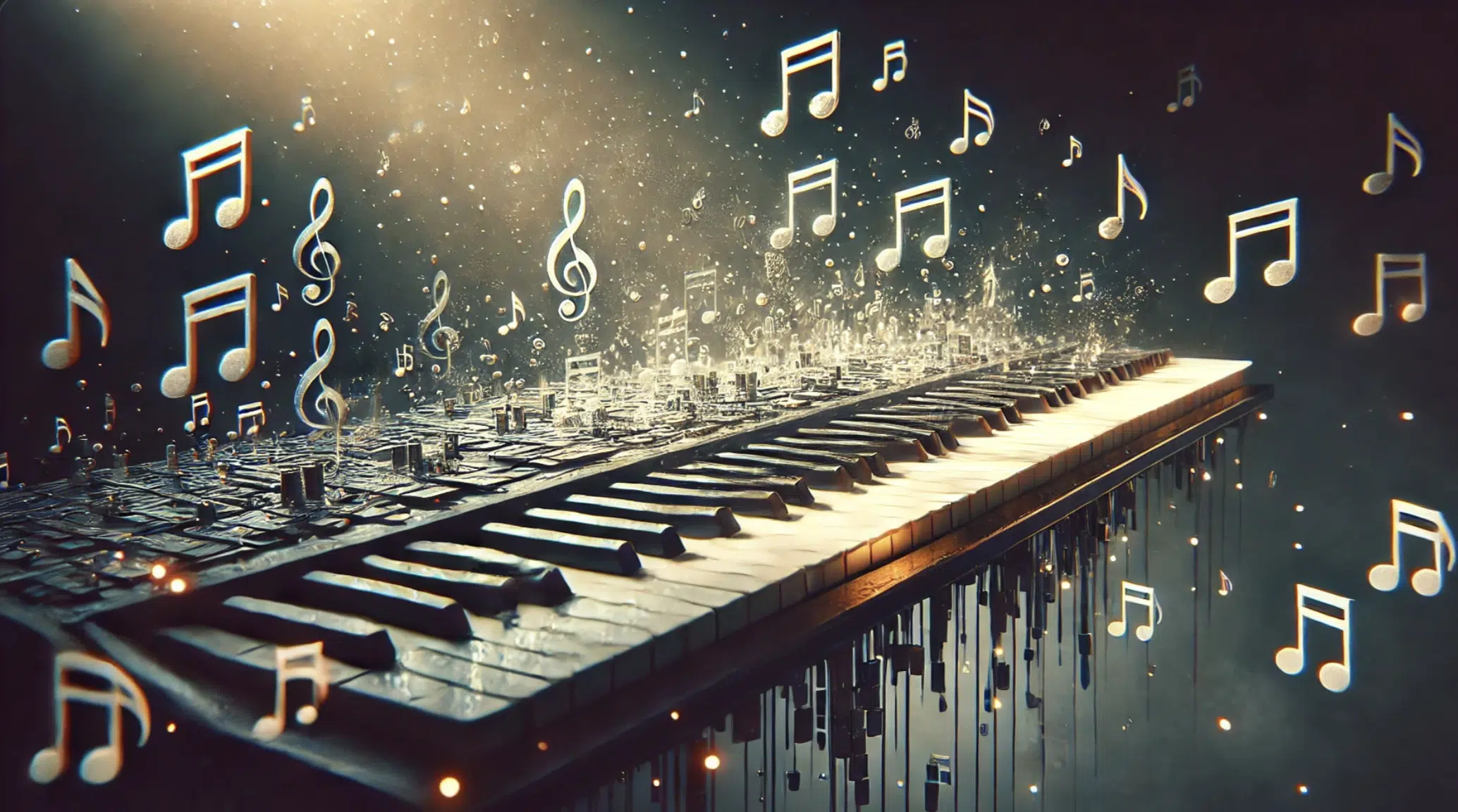
Dissonance and tension are two key players that can add extra complexity and emotional depth to your sad chord progressions.
Dissonance occurs when two or more notes clash, creating a sense of instability or discomfort (which people are very intrigued by).
This can be achieved by throwing in some suspended chords like Csus2 (C-D-G) or Csus4 (C-F-G), which replace the third with a second or fourth, respectively.
Diminished chords, such as B diminished (B-D-F), also introduce tension with their unsettling intervals.
Using these dissonant elements sparingly can heighten the emotional impact of your chord progression, which hooks people in further.
The tension created by these chords resolves as the progression moves back to more stable chords 一 providing an all-around powerful emotional journey.
Like everything else in life, the good stuff happens when tension and release come together to create beautiful chaos.
-
Modal Interchange
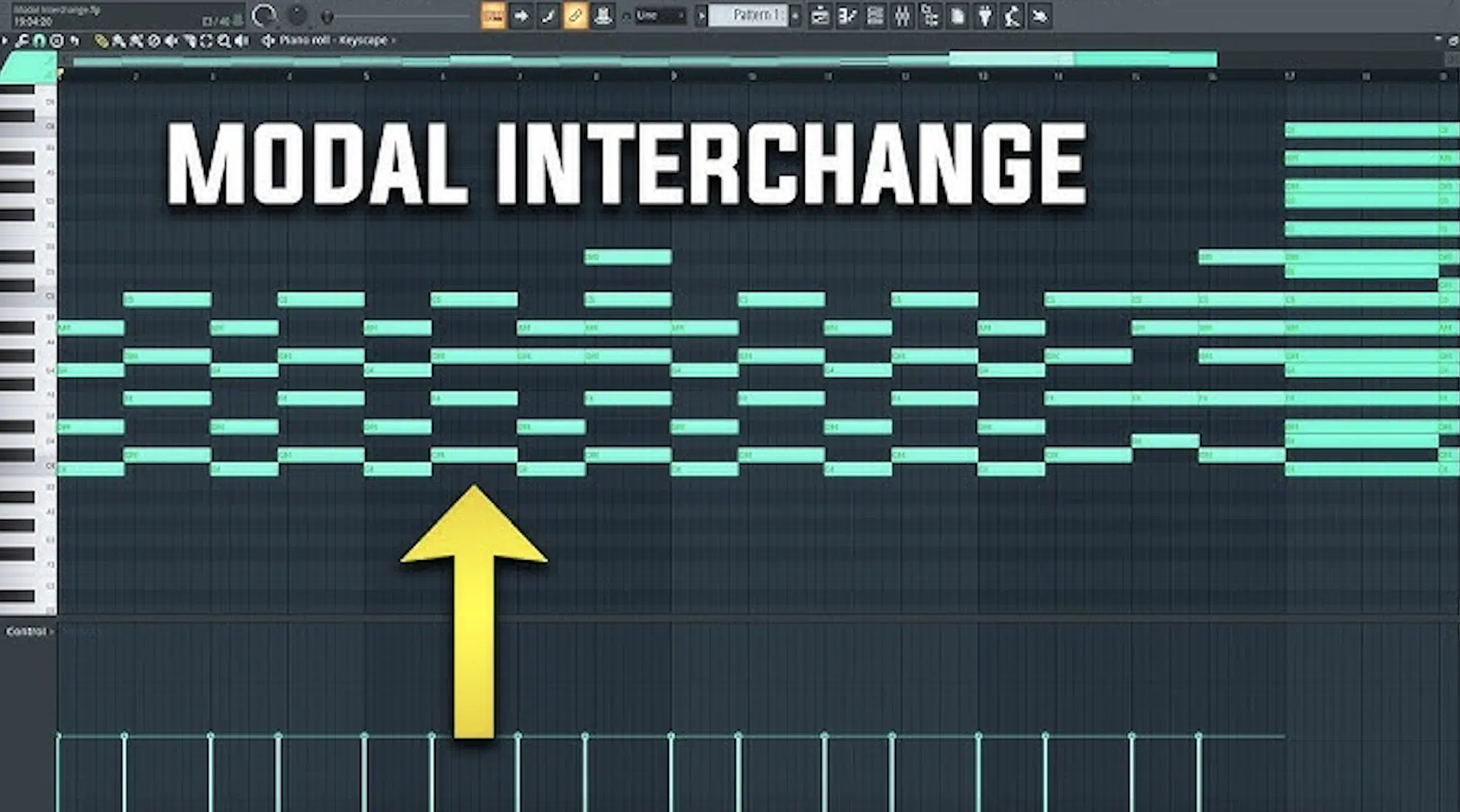
Modal interchange is a powerful technique that allows you to borrow chords from parallel modes which, like tension and release, add depth and complexity.
For instance, if you’re working in A minor, you might incorporate an F major chord (F-A-C) from the A major scale to introduce a surprising twist.
This borrowing of chords can create unexpected harmonic shifts that keep the listener engaged and emotionally invested.
Using chords from modes like Dorian or Phrygian can add unique flavors to your progressions, making them stand out, so make sure to play around with that.
For example, switching to a Dorian mode can introduce a brighter, more hopeful chord within a predominantly sad progression 一 enhancing the emotional contrast.
By experimenting with modal interchange in your own songs, you can create chord progressions that are not only sad but also extremely complex and deeply expressive.
NOTE: Don’t forget to play around with different variations, as the sound will change (tension/resolve wise) in super interesting ways; make sure to get creative.
7 Popular Sad Chord Progressions
Sad chord progressions are used extensively in modern music to evoke emotions, and we’re breaking down the top 7. We’ll break down its essence and then provide you with an example of that particular sad chord progression being used. Inside the parenthesis, you’ll see the key in which our example is in.
#1. vi-IV-I-V (A Minor)
When it comes to common chord progressions, the vi-IV-I-V chord progression in A minor (Am-F-C-G) is a classic that many will recognize.
This chord progression starts with A minor (A-C-E), creating a sense of sadness, then moves to F major (F-A-C) to provide contrast with a slightly brighter sound.
Then, it shifts to C major (C-E-G) 一 adding a touch of hope.
Finally, G major (G-B-D) brings a subtle rise/uplift before returning to A minor.
This sad chord progression is used, for example, in the song “Stay” by Rihanna featuring Mikky Ekko, which uses this sequence to evoke deep emotional resonance.
So, if you’re creating a sad song that’s perfect for ultra reflective tracks, this chord progression is a great option.
NOTE: The key to what makes this song so alluring is how it alternates between minor and major chords; perfect for what the goal is.
Side note, if you want to learn all about the different types of chords, we got you.
#2. i-iv-v-i (E Minor)
In the key of E minor, the i-iv-v-i chord progression (Em-Am-Bm-Em) is a staple for bringing that sad, intense vibe.
It starts with E minor (E-G-B), setting a somber tone, then moves to A minor (A-C-E), which reflects this mood and deepens the emotional impact.
Next, it transitions to B minor (B-D-F#) to introduce a sense of tension and longing.
Finally, it returns to E minor 一 completing the cycle and reinforcing the initial feeling of sadness.
This specific chord progression is featured in “Lovely” by Billie Eilish, which captures the essence of heartbreak and vulnerability.
The i-iv-v-i structure is simple yet powerful, making it ideal for conveying deep, personal emotions that mostly everybody can relate to.
#3. vi-ii-V-I (C Minor)
The vi-ii-V-I progression in C minor (Cm-Dm-G7-Cm) creates a super rich and touching atmosphere, starting with C minor.
Next it moves to D minor (D-F-A) to add a layer of tension and depth.
Then the G7 chord (G-B-D-F) introduces a dominant seventh, increasing the emotional intensity 一 finally ending back on C minor for closure.
This leaves your listeners with a lingering sadness that really sticks.
This sad chord progression is used in “The Night We Met” by Lord Huron, a song that completely revolves around loss and yearning..
The vi-ii-V-I structure provides a dynamic journey with extra flavor and is perfect for creating deeply moving/tragic songs in many genres.
#4. i-vi-iii-VII (G Minor)
In the key of G minor, the i-vi-iii-VII chord progression (Gm-Eb-Bb-F) offers a unique and engaging sound…
Starting with G minor (G-Bb-D), it sets the initial sorrow-packed mood.
Next, it moves to Eb major (Eb-G-Bb) in order to introduce major chords that add a certain bittersweet quality people love.
Then, it transitions to Bb major (Bb-D-F), providing a moment of uplift.
The final move to F major (F-A-C) adds tension and drama before resolving back to G minor for the perfect circle of emotions.
This chord progression is used in songs like “Say You Won’t Let Go” by James Arthur 一 capturing the haunting complexity of love and loss.
Its dynamic shifts between the major IV chord and minor chords make it a versatile and show-stopping choice for producers.
#5. iv-i-VI-V (D Minor Example)
The iv-i-VI-V chord progression in D minor (Dm-Am-Bb-F) creates a deep sense of longing, passion, and sadness.
This sad chord progression:
- Starts with D minor (D-F-A)
- Moves to A minor (A-C-E)
- Transitions to Bb major (Bb-D-F)
- Slides to F major (F-A-C)
- Returns to D minor
This sad progression is featured in songs like “The A Team” by Ed Sheeran, which deals with heavy themes and emotions.
If you really want to hit home and include a structure that is the epitome of a powerful emotional arc, the iv-i-VI-V will certainly not disappoint.
#6. i-iv-III-VII (F Minor Example)
In the key of F minor, the i-iv-III-VII progression (Fm-Bbm-Ab-Eb) offers an emotionally rich starting point for any artist or producer.
It sets a reflective tone right off rip with F minor (F-Ab-C), then moves to Bb minor (Bb-Db-F) to further deepen this mood 一 adding extra layers of sorrow and depth.
Then, it hits Ab major (Ab-C-Eb) to introduce that perfect major chord companion, providing that upsetting yet nostalgic contrast.
Remember what I said, sad chord progressions are all about tension and release, so just keep that mind when experimenting with different combinations.
The final move to Eb major (Eb-G-Bb) adds tension before resolving back to F minor.
This chord progression is used in songs like “When I Was Your Man” by Bruno Mars, which captures themes of regret, longing, and heartache perfectly.
If you want to instantly captivate (and impress) your listeners, the i-iv-III-VII chord progression is a solid choice.
#7. i-ii-iv-V (B Minor Example)
Wrapping up our list is the i-ii-iv-V chord progression in B minor (Bm-C#m-Em-F#)… which creates a profound sense of sadness and tension.
This sad chord progression:
- Starts with B minor (B-D-F#)
- Moves to C# minor (C#-E-G#)
- Transitions to E minor (E-G-B)
- Hits F# major (F#-A#-C#)
- Resolves back to B minor
It’s simple, yet the amount of emotions it can bring to the table is quite impressive.
This sad chord progression is featured in “Let Her Go” by Passenger 一 dealing with themes of loss and yearning when the guitar gently weeps.
Its structure allows for a powerful emotional build-up, which makes it absolutely ideal for creating impactful music.
Creating Your Own Sad Chord Progressions: Breaking it Down
Creating your own sad chord progressions is the key to making emotional, deep tracks that people really get moved by when they listen. It’s all about tugging on their heartstrings.
-
Choosing the Right Key
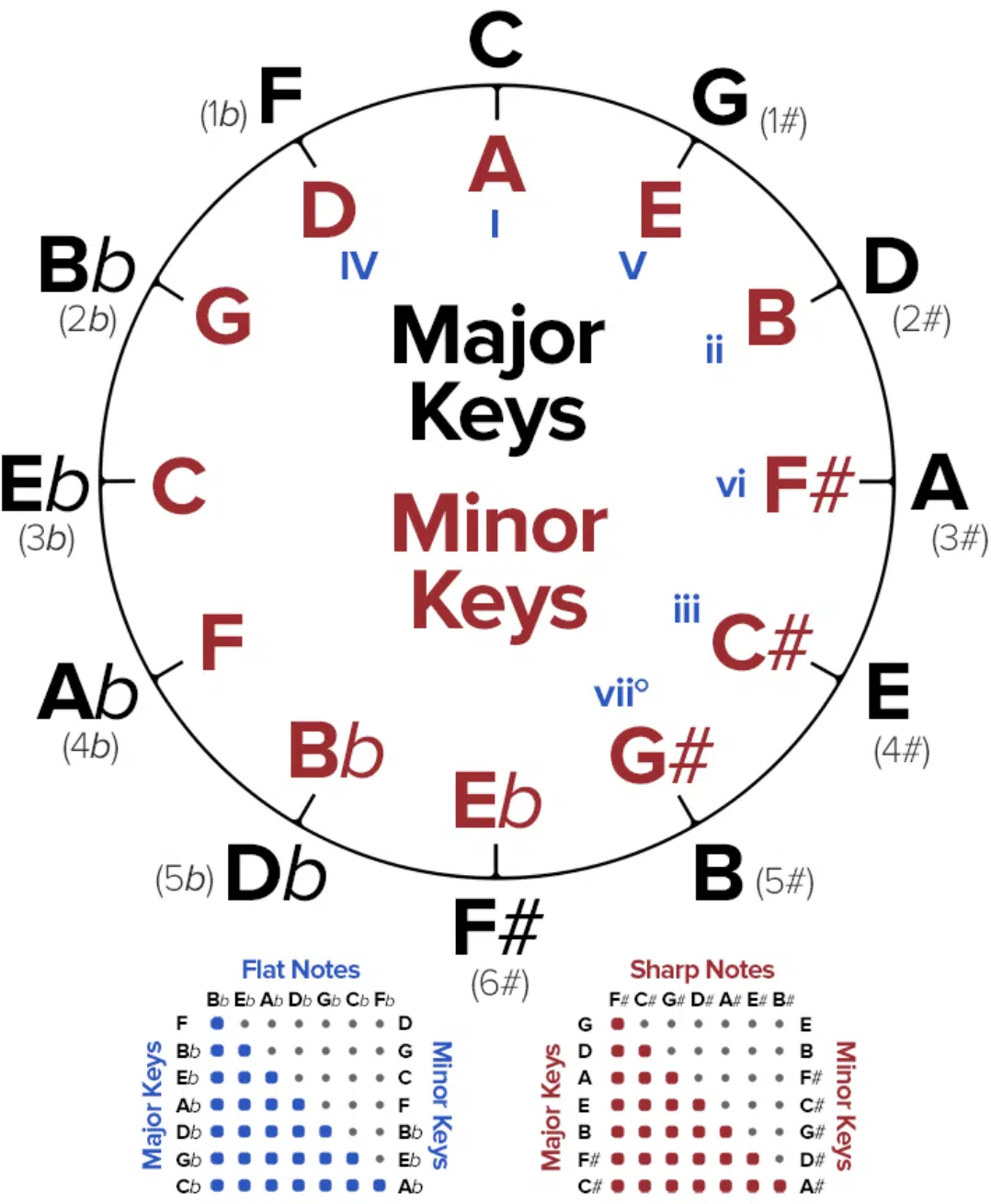
Choosing the right key is everything when it comes to setting the mood of your track.
Minor keys are the go-to choice for sad progressions of course, with keys like A minor and E minor being particularly popular.
Any tune that you hear with that beautiful progression is certainly going to be moving.
NOTE: Consider the vocal range if you’re writing a part for a singer.
Different keys can evoke different emotional intricacies, so experimenting with various minor keys can help you find the perfect fit.
Also, try using keys with flats, like D minor or G minor, to add a darker, more introspective quality to your music.
Just remember the pun 一 the minor key is the key to sad chord progressions.
-
Building a Chord Sequence
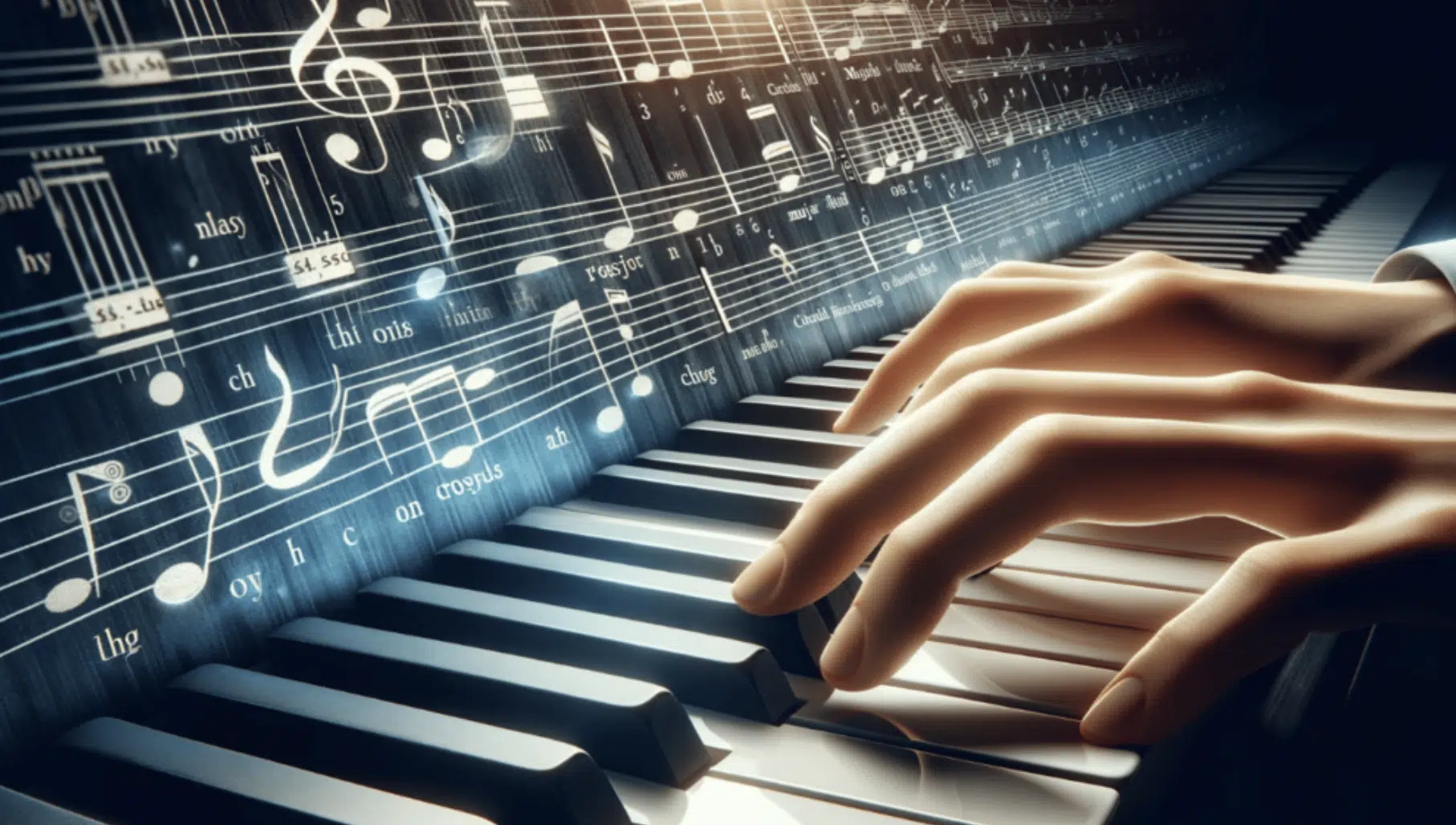
Building a chord sequence involves selecting chords that complement each other both:
- Harmonically
- Emotionally
Try starting with a strong opening chord, like the tonic minor (i) chord, to establish the sad tone and from there, experiment with different progressions.
For instance, you can move to the iv or vi chord (which brings that depth).
Also, using dissonant chords, like diminished chords or suspended chords, can further pump up the emotional impact, which we’ll break down in the following section.
Just make sure just pay attention to the voice leading and transitions 一 you always want to make sure your sound is cohesive and flowing perfectly.
NOTE: Using inversions and different voicings can also add variety and interest to your chord sequences.
-
Adding Suspended and Diminished Chords
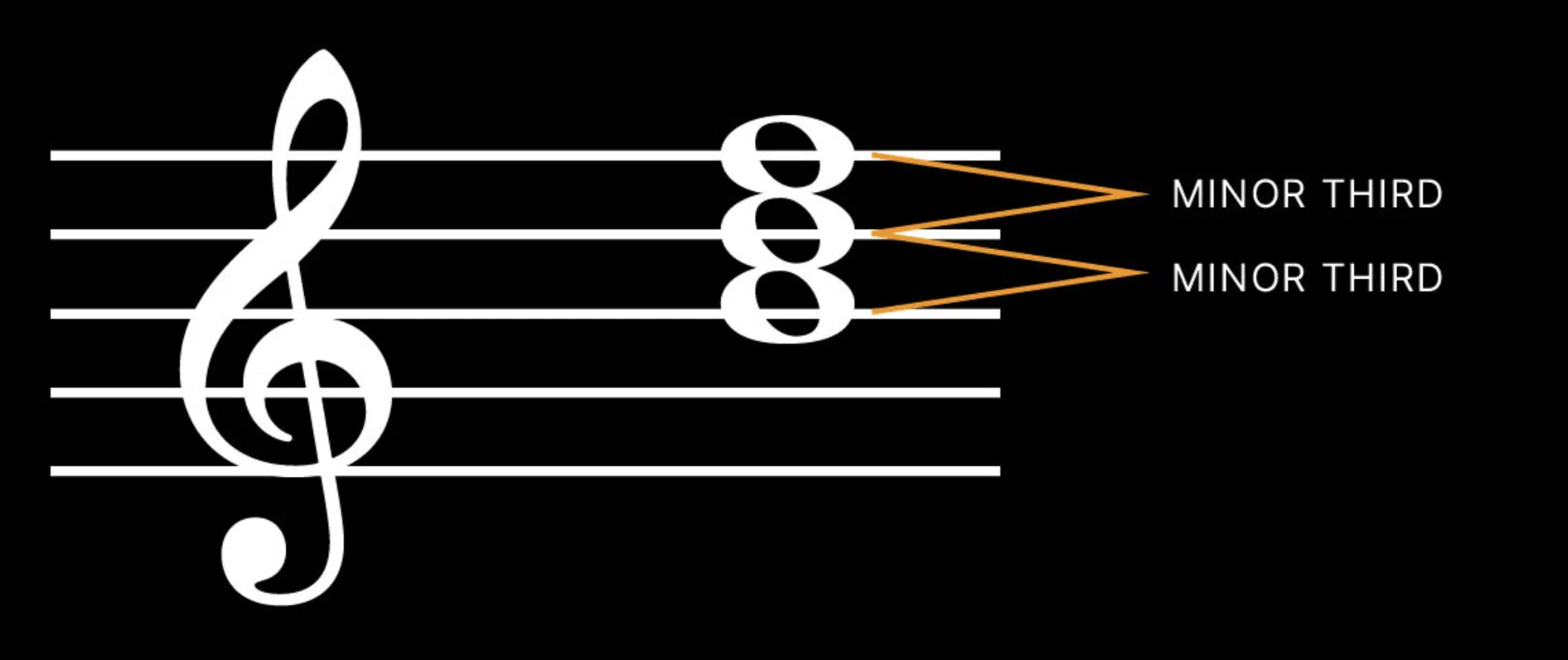
Suspended chords and diminished chords are super effective tools for adding tension and dissonance to your sad chord progressions.
A suspended chord, like Csus2 (C-D-G), replaces the third with a second or fourth, creating a sense of unresolved tension.
Diminished chords, such as B diminished (B-D-F), have a flattened fifth, adding an unsettling, tense quality.
These chords can be used to heighten emotional moments within your progression, making the eventual resolution way more impactful.
NOTE: Use them with caution to avoid overwhelming the listener, but strategically to enhance the overall mood. Overdoing it can ruin everything, just like when you’re mixing.
-
Balancing Consonance and Dissonance
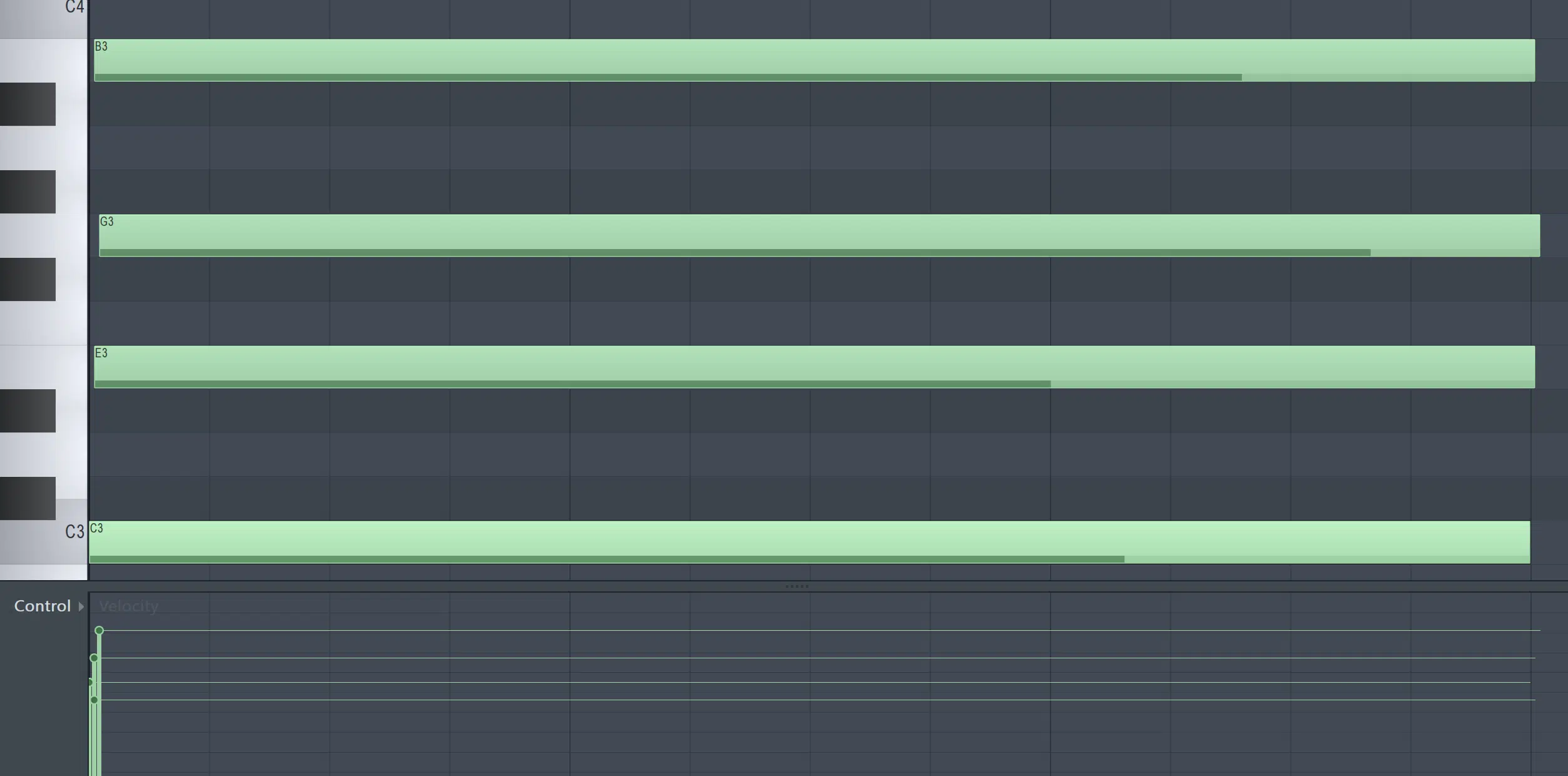
Humanized Triad
Balancing consonance and dissonance is key to creating super emotional chord progressions, so let’s break it down.
Consonant chords, like a major triad or minor triad, provide stability and resolution.
On the flip side, dissonant chords, such as diminished and suspended chords (as we talked about earlier) introduce tension and unrest.
By alternating between these types of chords, you can create a dynamic emotional journey that people will be begging to go on.
Just remember that too much dissonance can be jarring, while too much consonance can lack emotional depth, which will instantly turn the listener off.
Striking the right balance is what it’s all about, so make sure to be diligent.
Side note, if you want to learn everything about triads, we’ve got you covered.
NOTE: Don’t forget about using modal interchange as we talked about as well.
-
Enhancing Sadness with Melodic Elements
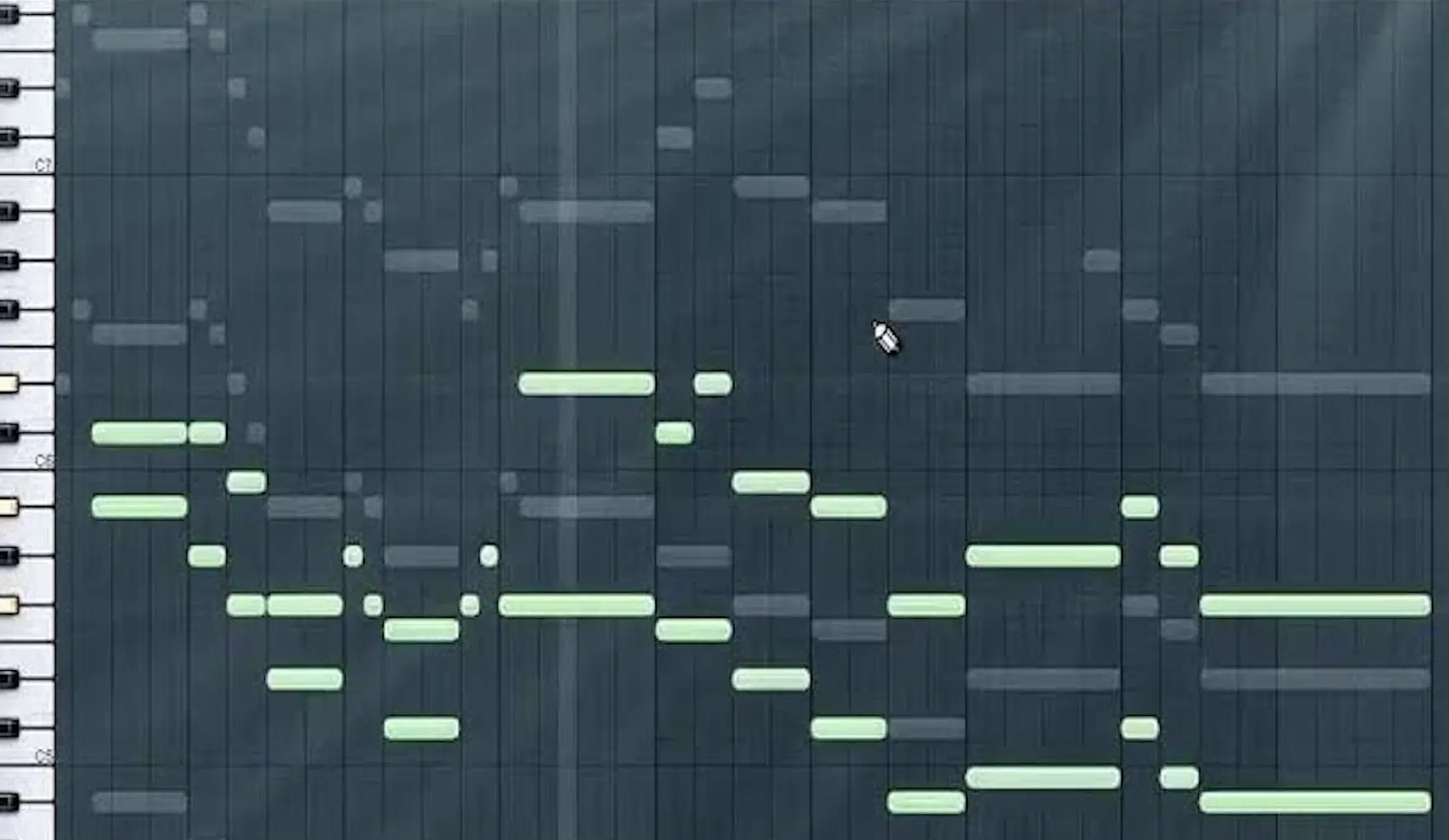
Enhancing sadness in your music goes beyond chord progressions 一 melodic elements are VIPs as well.
Creating melodies that truly complement your chord progressions can intensify the emotional impact and help enhance your skills in the process.
Use descending melodic lines to evoke a sense of falling or despair.
Incorporating minor scales, such as the natural minor or harmonic minor, can add a haunting quality.
Counterpoint, where two or more independent melodies interact, can create a rich, emotional brilliance.
Adding ornamentation, like trills and grace notes, can provide expressive detail and consider the rhythm and phrasing of your melodies to match the mood.
Layering harmonies and countermelodies can deepen the emotional texture.
Bottom line, melodic choices can seriously influence the overall feel of your track 一 making it stand out and shine.
Side note: Incorporating a slow tempo can significantly turn up the emotional impact, as heard in emotional songs like “Unchained Melody.”
Creating a melody that complements your chord progression is essential, and using the minor iii chord can add a unique, sorrowful touch.
Sad Chord Progressions: Final Thoughts
And there you have it, the key to writing sad chord progressions that are not only captivating, but instantly evoke deep emotions.
By listening to these tips and tricks, you’ll be able to create compositions that not only resonate with listeners but also stand out in the music world (which is tough).
As a producer, you’ll need to understand the theory behind these progressions and apply them creatively in your work.
Plus, you’ll be able to enhance your tracks with melodic elements and out-of-the-box production techniques.
And now, after this article, you’ll master it in no time.
To skip all the theory and get right to skyrocketing to the top of the charts, then you’ve got to check out the legendary (free) Essential Famous MIDI Chord Progressions.
It includes 24 unique MIDI chord progressions from songs by hit-makers like The Weeknd and Billie Eilish, and is the best way to get your track millions of plays.
Your tracks will basically be set up for success just with one free download.
Simply plug & play into your music and you’re off to the races.
You can either use them in a song you’re already working on to take it to that radio-worthy level or just have a hit foundation for a new song right off the bat.
Plus, everything is 100% royalty-free, done-for-you, and usable with all your favorite sounds, so you can’t go wrong.
So go ahead, create those sad chord progressions, and never stop experimenting 一 your next hit song might be just around the corner.
Until next time…







Leave a Reply
You must belogged in to post a comment.